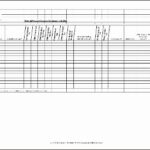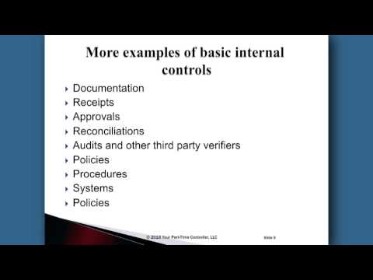How to reconcile an account in QuickBooks Online

Adjustments may be necessary to rectify any inconsistencies and ensure that the financial records accurately reflect the actual bank activity. This crucial feature can be accessed by navigating to the ‘Banking’ menu and selecting the ‘Reconcile’ option. Once within the reconcile window, users can input the bank statement date, ending balance, and begin matching transactions.
Cut out manual reconciliation with QuickBooks and Wise
This step also streamlines the reconciliation process, allowing for a more efficient and error-free comparison between the company’s records and the bank statement. Marking transactions as cleared in QuickBooks Desktop enhances the overall accuracy and reliability of financial reconciliations. This is an important procedure to ensure that the financial records reflect the actual state of the business’s transactions. It involves analyzing and adjusting any discrepancies in the previously reconciled transactions, thereby maintaining the integrity of the accounting system.

Step 2: Start reconciliation in QuickBooks
Changes to completed reconciliations can unbalance your accounts and other reconciliations. Change the account statement information, as needed, and then click the “Save” button in the lower-right corner of this pane to return to the “Reconcile (Account name)” page. Click the what are the formulas of cos “Cancel” button in this pane to leave without saving any changes.
How often should you reconcile in QuickBooks?
With QuickBooks, there are ways to speed up or even automate the process. If you pay your vendors or your employees with a check, you’ll need to keep track of those checks. Most importantly, you’ll need to know how much in outstanding checks you have at the end of the month.
When you reconcile, you compare two related accounts make sure everything is accurate and matches. Just like balancing your checkbook, you need to do this review in QuickBooks. You should reconcile your bank and credit card accounts in QuickBooks frequently to make sure they match your real-life bank accounts. If you have connected your bank accounts with QuickBooks Online, it’s important that all of your downloaded transactions have been matched with recorded expenses.
To get started, navigate how to calculate total assets liabilities and stockholders’ equity to the Reconcile page in QuickBooks Online (Take me there). You can do this by clicking on the Gear icon in the upper-right corner of the screen and selecting Reconcile from the drop-down menu. For example, if your statement displays a bank fee or other charge, it’s likely the charge has not been recorded. You can run into the same issue if you use your charge card to pay a bill but forgot to record it in QuickBooks Online. If you forgot to enter an opening balance in QuickBooks in the past, don’t worry. Reconciliation is a process that you should aim to complete regularly.
- If you adjusted a reconciliation by mistake or need to start over, reach out to your accountant.
- Change the account statement information, as needed, and then click the “Save” button in the lower-right corner of this pane to return to the “Reconcile (Account name)” page.
- Marking transactions as cleared in QuickBooks Desktop enhances the overall accuracy and reliability of financial reconciliations.
- This process plays a crucial role in ensuring that the recorded transactions align with the actual activity in the bank account.
- If everything matches, you know your accounts are balanced and accurate.
- The Ascent, a Motley Fool service, does not cover all offers on the market.
To carry out a reconciliation, you will need to have your monthly bank or credit card statements on hand. Marking transactions as cleared in QuickBooks Desktop signifies the validation of these transactions against the bank statement, contributing to the accuracy of the reconciliation process. By finalizing the reconciliation process, businesses can have confidence in the reliability of their financial records and make informed decisions based on accurate data. Marking transactions as cleared in QuickBooks Online signifies the validation of these transactions against the bank statement, contributing to the accuracy of the reconciliation process. The information you entered from the account statement appears at the top of the page. The purpose of this page is to click the small circles at the right end of the transaction rows that appear in the account’s statement to mark them as “cleared” by placing a checkmark in the circles.
Reconciling your accounts is an important part of managing your finances in QuickBooks Online. It allows you to compare your records with your bank or credit card statement and make sure that everything is accurate and up-to-date. In this article, we’ll provide step-by-step instructions on how to reconcile an account in QuickBooks Online. When you reconcile, you compare your bank statement to what’s in QuickBooks for a specific period of time. In the end, the difference between QuickBooks and your bank accounts should be US $0.00, although processing payments can sometimes cause a small gap. Alternatively, to view an account reconciliation report later, click the “Settings” button.
If you choose to connect your bank and credit cards to your online account, QuickBooks will automatically bring over transactions and also the opening balance for you. A reconciliation of a bank or credit freelance accountant card account compares the statement to what is in QuickBooks. This is the same idea as balancing an account and checkbook in more manual times.
By marking transactions as cleared, it helps to confirm that the funds have been successfully transferred and received, providing a clear trail of verified financial activities. This validation step is pivotal in maintaining the integrity and accuracy of financial records, enabling businesses to confidently rely on their financial reports for decision-making and compliance purposes. It plays a crucial role in ensuring the financial accuracy and integrity of a company’s records. By reconciling regularly, businesses can detect and rectify any discrepancies, minimizing the risk of errors and fraudulent activities.


